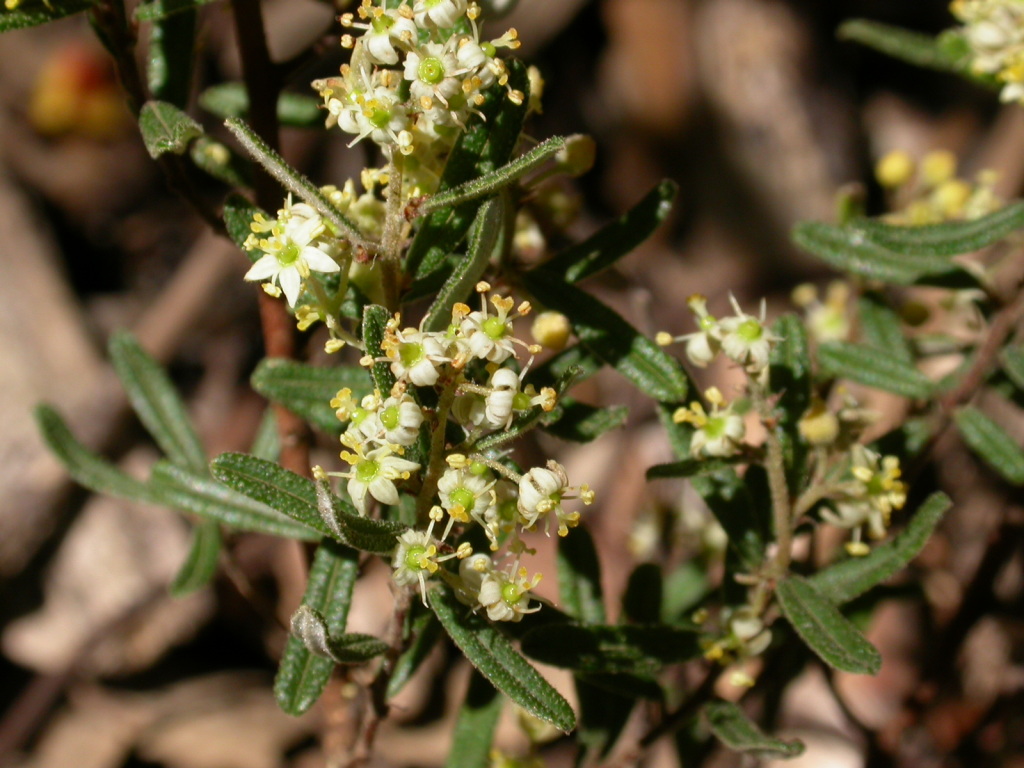Pomaderris angustifolia
N.A.Wakef.Shrub 1–2 m high, branchlets greyish, stellate-pubescent. Leaves linear to narrow-obovate, 7–15(–27) mm long, 1–2.5(–6) mm wide, obtuse, margins recurved to revolute, upper surface hispid with scattered to dense stellate hairs, lower surface greyish and densely stellate-pubescent; stipules 1–2 mm long, deciduous. Inflorescence of small axillary or terminal, 2–20-flowered clusters; bracts deciduous. Flowers cream or yellow, externally densely stellate-pubescent; pedicels 1–3 mm long; hypanthium 0.3–0.5 mm long; sepals 1.5–1.8 mm long, deciduous; petals absent; disc glabrous; ovary superior, glabrous, style branched near base. Capsule indented at apex; mericarp dehiscing via a longitudinal slit or membranous operculum. Flowers Oct.–Nov.
VRiv, GipP, CVU, NIS, EGL, EGU, HSF, HNF, MonT, VAlp. Also NSW. Scattered from near Maffra eastward to the border, usually growing in shallow rocky soils beside or near watercourses.
Forms with leaves larger and relatively broader than normal (indicated by the bracketed values in the description above) occur near Suggan Buggan, Genoa, near Mt Buffalo and at Mitta Mitta, sometimes in association with typical P. angustifolia, and with no obvious intermediates.Their taxonomic status warrants investigation.
Walsh, N.G. (1999). Pomaderris. In: Walsh, N.G.; Entwisle, T.J., Flora of Victoria Vol. 4, Cornaceae to Asteraceae, pp. 85–109. Inkata Press, Melbourne.
 Spinning
Spinning

